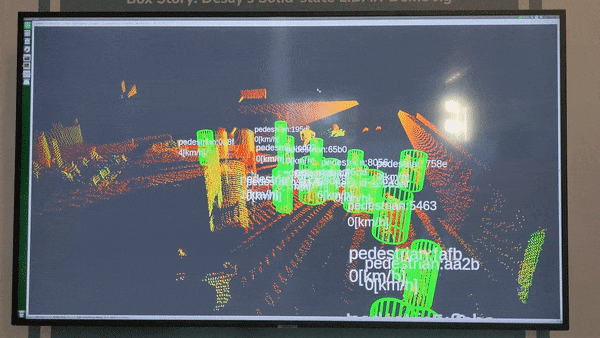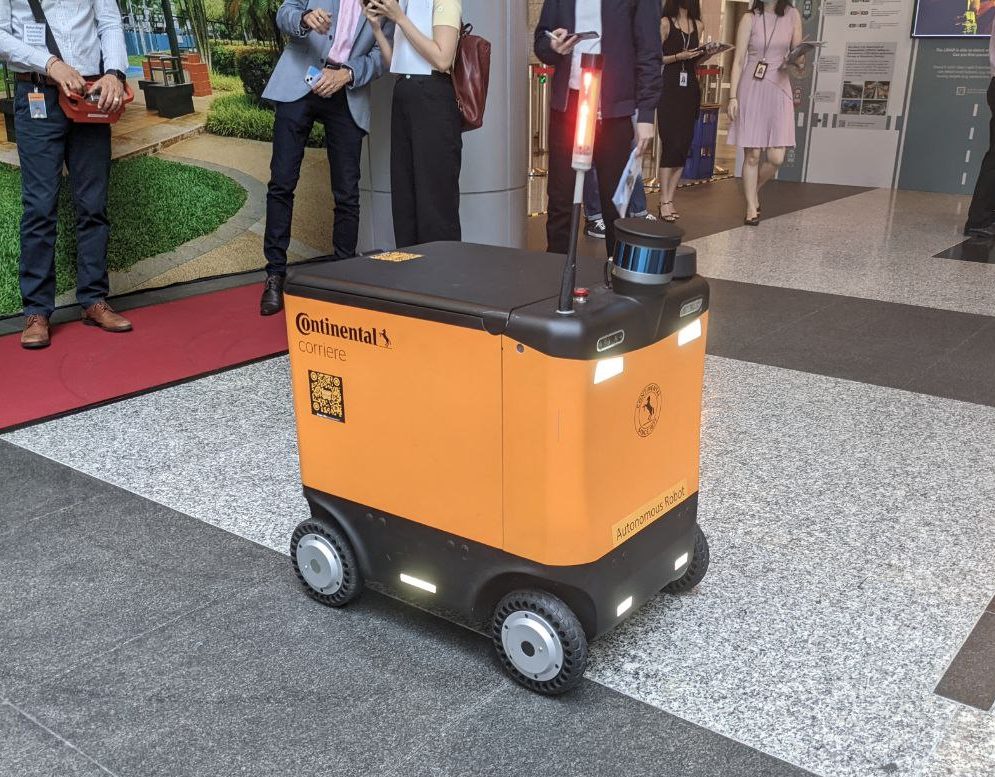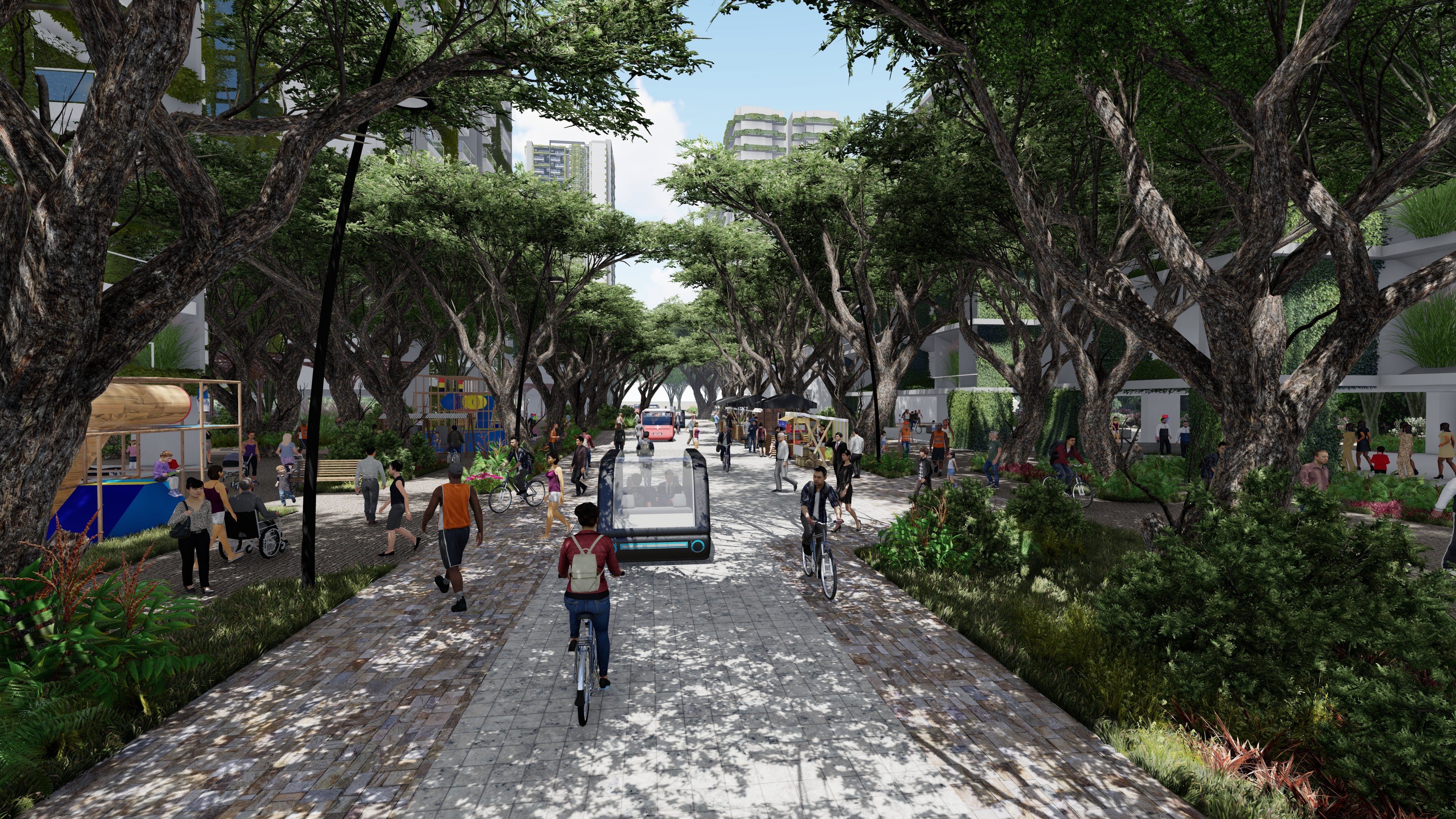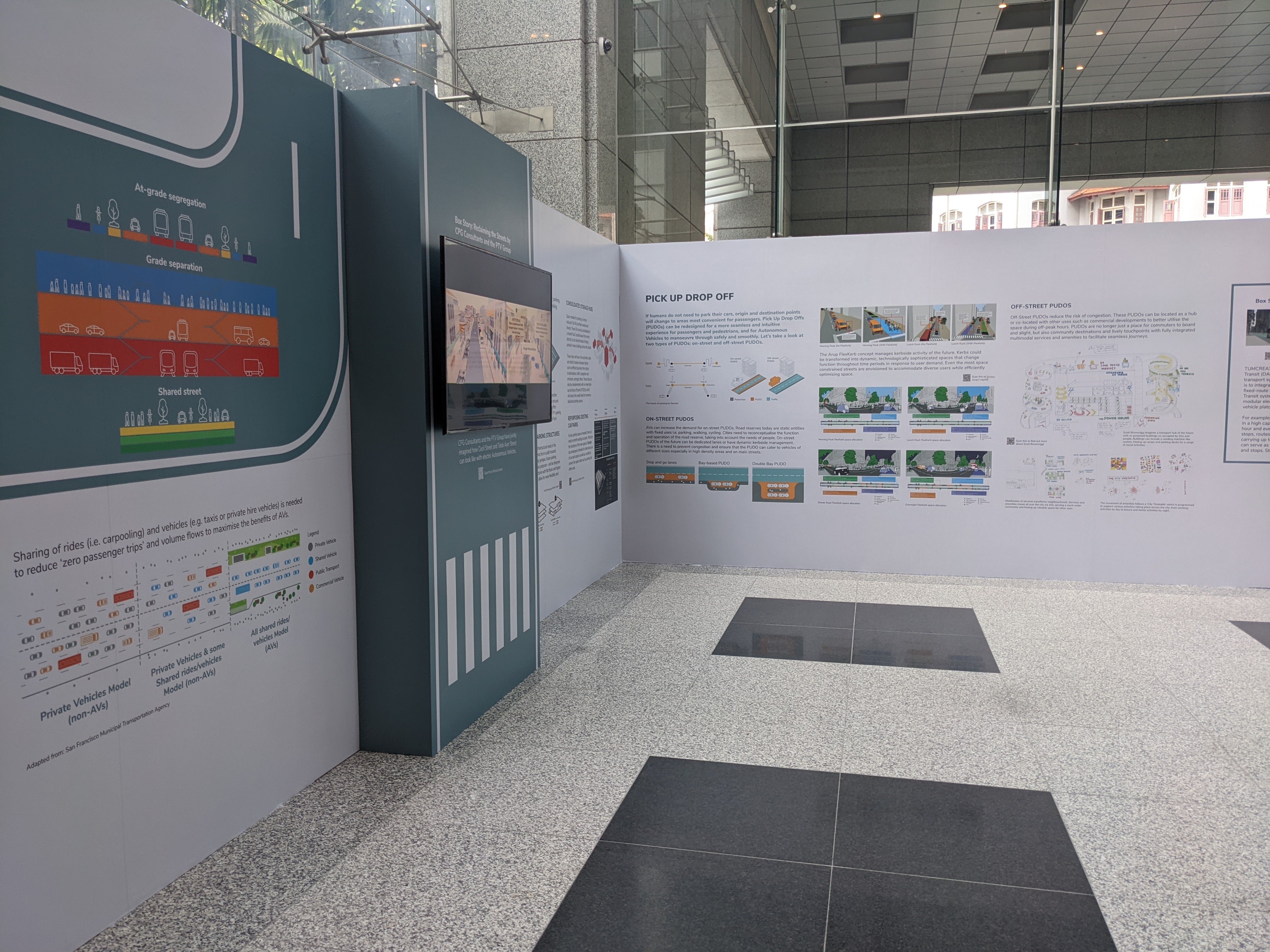Follow us on Telegram for the latest updates: https://t.me/mothershipsg
How different would Singapore look with the large-scale adoption of Autonomous Vehicles (AVs)?
The Urban Redevelopment Authority (URA) explores the many possibilities the city landscape could take in the future, in an exhibition launched on Jan. 13.
Moving people, goods and food
At the launch, Minister of State for National Development Tan Kiat How said that it is timely to consider how technologies like AVs "will shape our journey forward” as Singapore reviews its Long-Term Plan.
"While AV technology is promising, it is still early days. We will study the technology carefully, conduct trials to ensure the safety and readiness of AV mobility, and plan ahead to build a future city where AVs enhance our quality of life," he said.
 Real-time information captured by LiDAR sensors used by AVs. Video by Kow Zi Shan.
Real-time information captured by LiDAR sensors used by AVs. Video by Kow Zi Shan.
There are numerous AV trials being carried out in Singapore, for transporting goods, delivering food, and shuttling passengers.
One such project is the two Autonomous Mobile Robots that act as "couriers", making door-to-door deliveries in Punggol, a year-old trial that will conclude this month.
“Such contactless deliveries will grow in prominence as we move towards an endemic Covid-19 future,“ said Tan.
Not only can delivery AVs fulfil off-peak orders, AV services are also possibly cheaper than traditional food delivery services, a Continental representative told Mothership.
The automotive company has been delivering food in short distances from Dignity Kitchen, a food court in Boon Keng, in a trial since June 2021.
The representative said that small eateries and social enterprises like Dignity Kitchen are less likely to work with traditional food delivery services as they cannot afford their driver fees, which can cost up to 30 per cent of the food order.
It is also cheaper for customers -- the driverless AV has a flat delivery charge of S$0.50.
 Continental's delivery AV, as displayed in URA's exhibit. Image by Kow Zi Shan.
Continental's delivery AV, as displayed in URA's exhibit. Image by Kow Zi Shan.
Passenger AVs trials in Punggol, Tengah and Jurong
"AVs are still a very nascent and emerging technology, but we think it will have a big impact," said URA's group director of research and development Chiu Wen Tung.
Chiu said that the timeframe for the adoption of AVs would largely depend on when the technology will be ready, and the public acceptance of AVs.
In the next phase of AV deployment, LTA will be piloting the deployment of autonomous buses and autonomous on-demand shuttles in Punggol, Tengah and the Jurong Innovation District in the early 2020s.
According to LTA, the autonomous bus services will run alongside existing public transport services.
The autonomous shuttles will provide on-demand, first-and-last-mile connection services to MRT stations and bus interchanges.
Less traffic with fewer road lanes
URA said that AVs can reduce traffic congestion, reducing the number of car lanes and freeing up land for more green spaces or bicycle lanes, due to their ability to optimise routes and navigate more precisely.
This also means that AVs can create safer roads as they minimise accidents resulting from human error.
 Future community street. Image by Arup.
Future community street. Image by Arup.
As AVs can park themselves, the vehicles can be stored elsewhere in a shared “hub”, so not all buildings require their own carparks.
Carpark layouts can also be made more space-efficient as AVs can park closer to each other, and roads can be designed to place more importance on pick-up drop-off points instead.
Exhibition open to public
The exhibition, “Reimagining Urban Mobility with Autonomous Vehicles", is open to the public at the URA Centre Atrium from now until Mar. 29.
There are free guided tours on Tuesdays, Thursdays and selected Saturdays too, which you can sign up here.

Follow and listen to our podcast here
Top images by Kow Zi Shan.
If you like what you read, follow us on Facebook, Instagram, Twitter and Telegram to get the latest updates.
